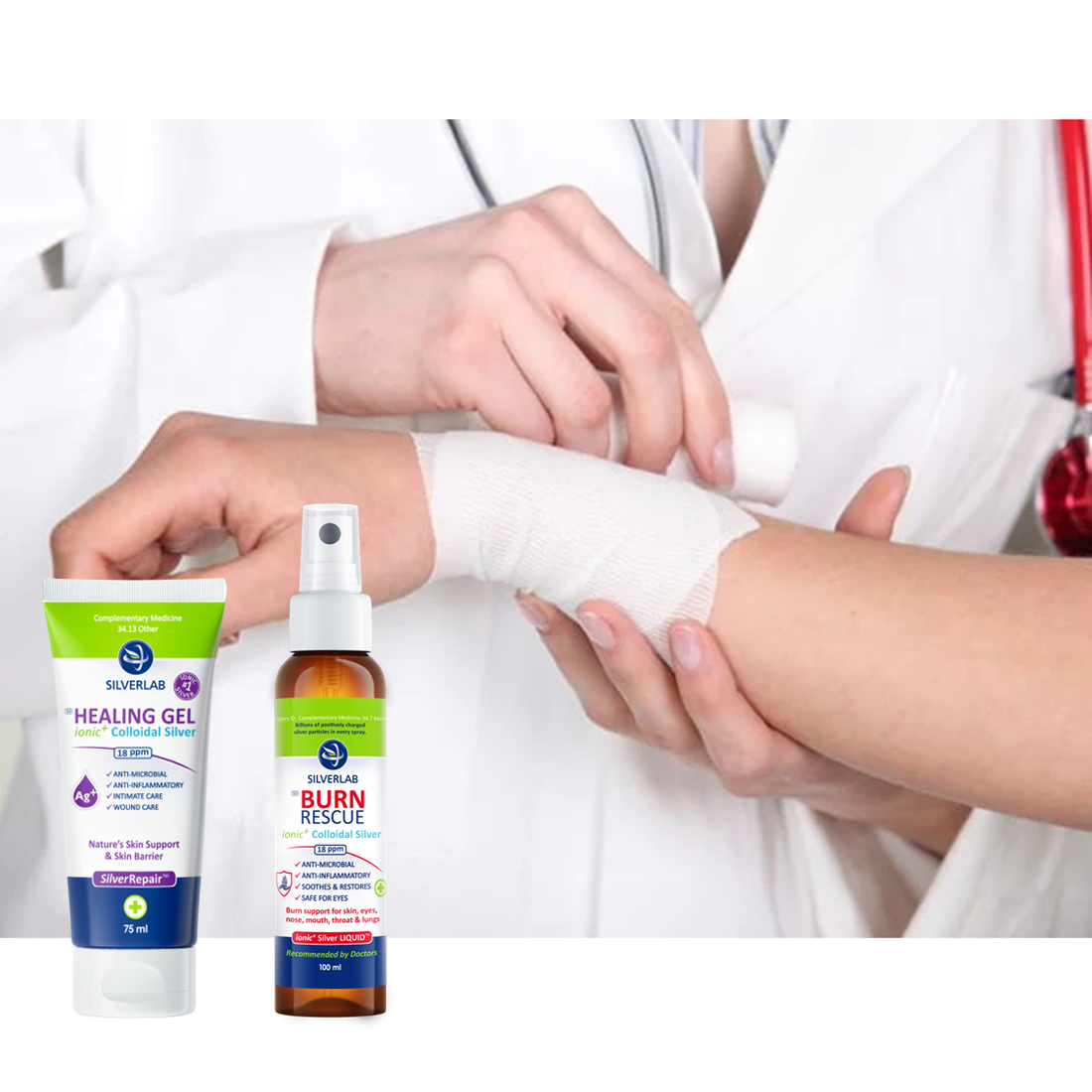
Colloidal Silver For Burn Care
Share
Using Silverlab Colloidal Silver to Manage Burn Wounds
Burn wounds are a major health concern worldwide, but South Africa is particularly affected. It is estimated that nearly 1.6 million burn cases occur in South Africa each year, making this a significant public health issue.
A crucial aspect of burn wound management is understanding how to respond in the first 30 minutes after the injury. Proper first aid can mean the difference between a life-threatening burn and a minor wound that can be treated at home. The following recommendations provide an easy-to-follow protocol for managing burns effectively. Please share this information—it could help prevent a serious burn from worsening.
The Role of Silver in Burn Wound Management
The use of silver in treating burns has a long history, dating back to the early 1970s when researchers first documented its effectiveness. Since then, silver has been commonly used for burn wounds, often in combination with the antimicrobial agent sulfadiazine. However, research indicates that sulfadiazine may interfere with the healing process, whereas silver alone has a better impact on wound recovery when used as a single agent.
Steps to take when dealing with a burn wound
Step 1: Immediate Action
Immediately after sustaining a burn, the skin can resist further damage if cooled promptly. Follow these steps:
- Place the burn under running cool water (not ice-cold or refrigerated water) for at least 10 minutes.
- This simple action can significantly reduce tissue damage. A burn that could have developed into a deeper wound may be mitigated to a milder injury.
After 10 Minutes: Apply Silverlab Burn Rescue and or Silverlab Healing Gel
Regardless of the severity of the burn, apply Silverlab Burn Rescue and/or Silverlab Healing Gel to the affected area after cooling it under water.
- If the burn involves broken skin (e.g., blisters), seek medical attention to assess the severity and determine if further treatment is needed.
- Keeping the wound moist with Silverlab Healing Gel or Burn Rescue enhances the healing process and helps prevent infection. To achieve this, apply Silverlab Healing Gel in a thick layer over the entire wound. There is no need to rub.
· If the burn has a bandage covering it, you can pour or spray Silverlab Burn Rescue directly onto the bandage allowing it to soak through to the wound. This can be done regularly to keep the bandage and the wound moist.
Medium-Term Management: Ongoing Care
· If the burn does not require hospitalisation or surgical intervention (such as skin grafting), daily applications of Silverlab Burn Rescue and/or Silverlab Healing Gel can support healing. The silver particles in the burn rescue and gel help prevent infection and promote faster recovery.
- Continue to monitor the wound for signs of infection, such as increased redness, swelling, increased pain or discharge.
Thoughts on Sunburn
Sunburn also qualifies as a burn and should be treated with the same care:
- Gently apply Silverlab Burn Rescue or Silverlab Healing Gel onto the skin. The gel is the preferred treatment.
· Do not rub the gel into the skin. Instead, apply a thick layer gently and reapply as often as needed throughout the day. You can also reactivate the Healing Gel by spraying Burn Rescue onto it, as both contain the same active ingredient.
What NOT to do with burn wounds
There are many myths about treating burns that can cause more harm than good. Avoid the following:
- Do not apply toothpaste, butter, or other household substances to the burn. These can trap heat in the wound and may require medical removal.
- Do not use ice or extremely cold water, as these can cause further tissue damage.
- Do not break blisters, as this increases the risk of infection.
Final Thoughts
Understanding the correct approach to burn wound care can significantly impact recovery. Silver has a well-documented role in treating burns, and Silverlab Burn Rescue and Silverlab Healing Gel offer a simple, effective way to support healing. By following these steps, keeping Burn Rescue and Healing Gel within easy reach, and avoiding harmful myths, you can promote better outcomes for burn injuries.
Share this protocol—it could help someone prevent a minor burn from becoming a serious medical emergency.


